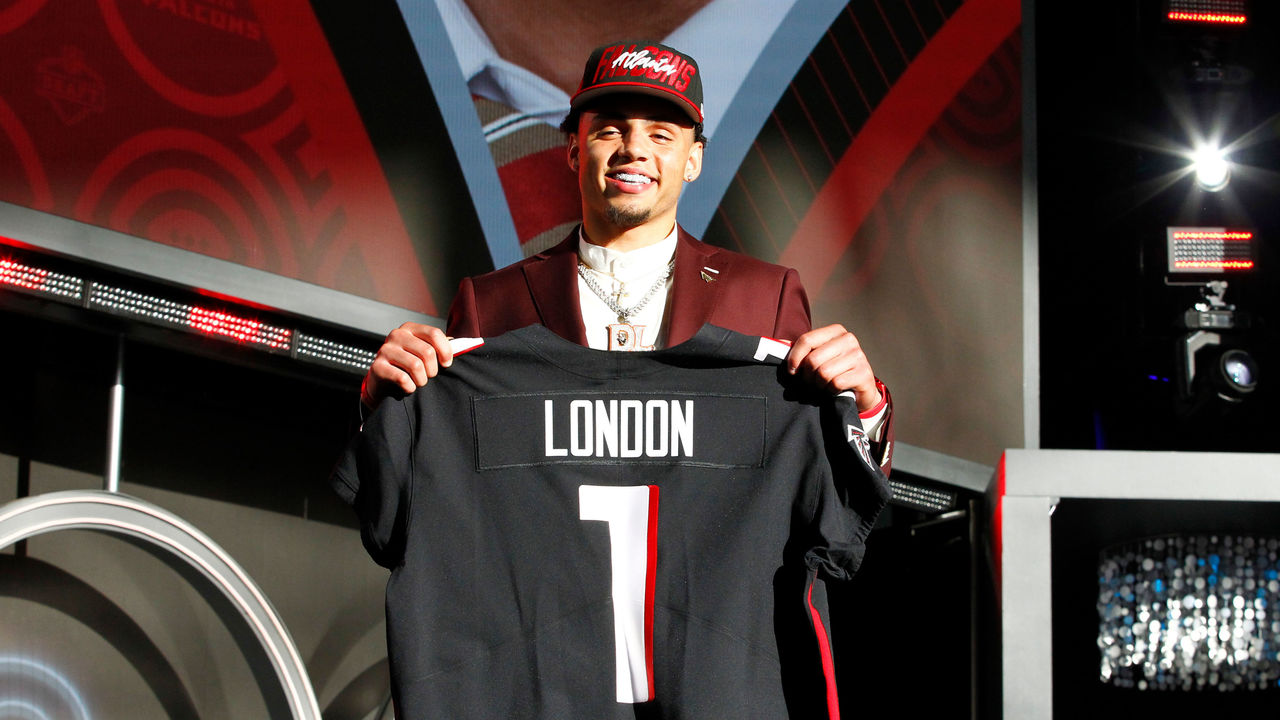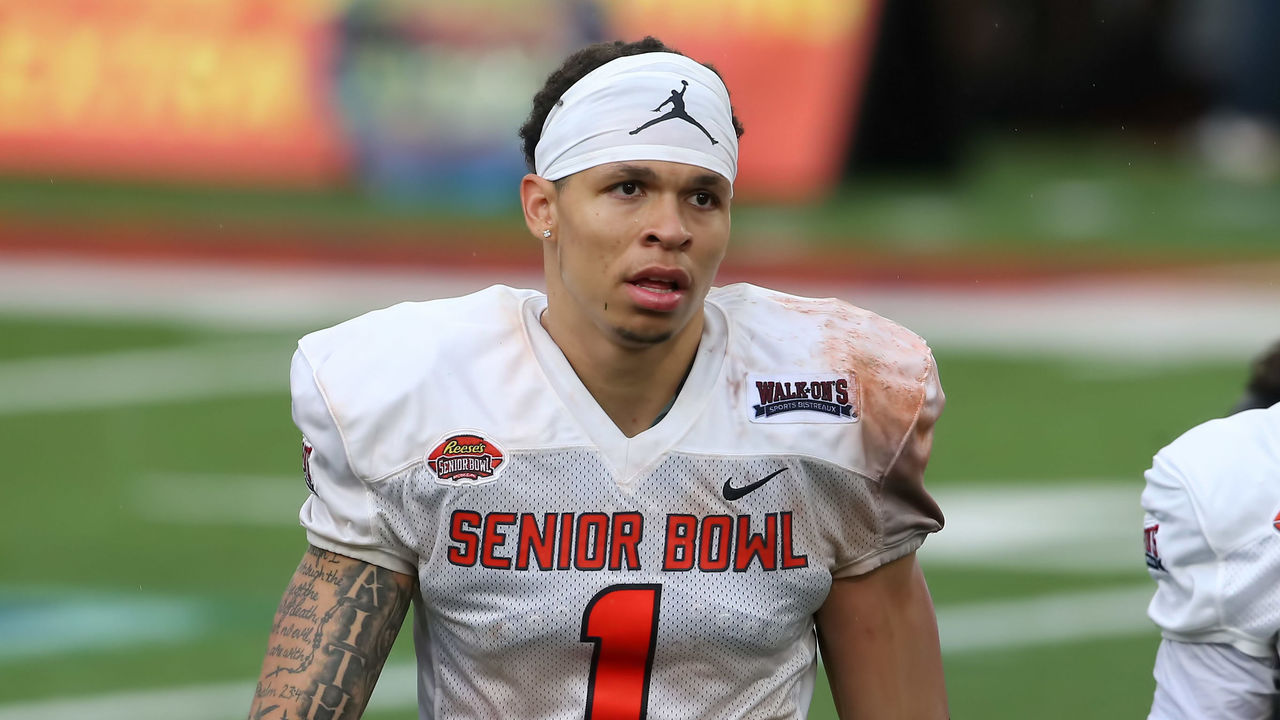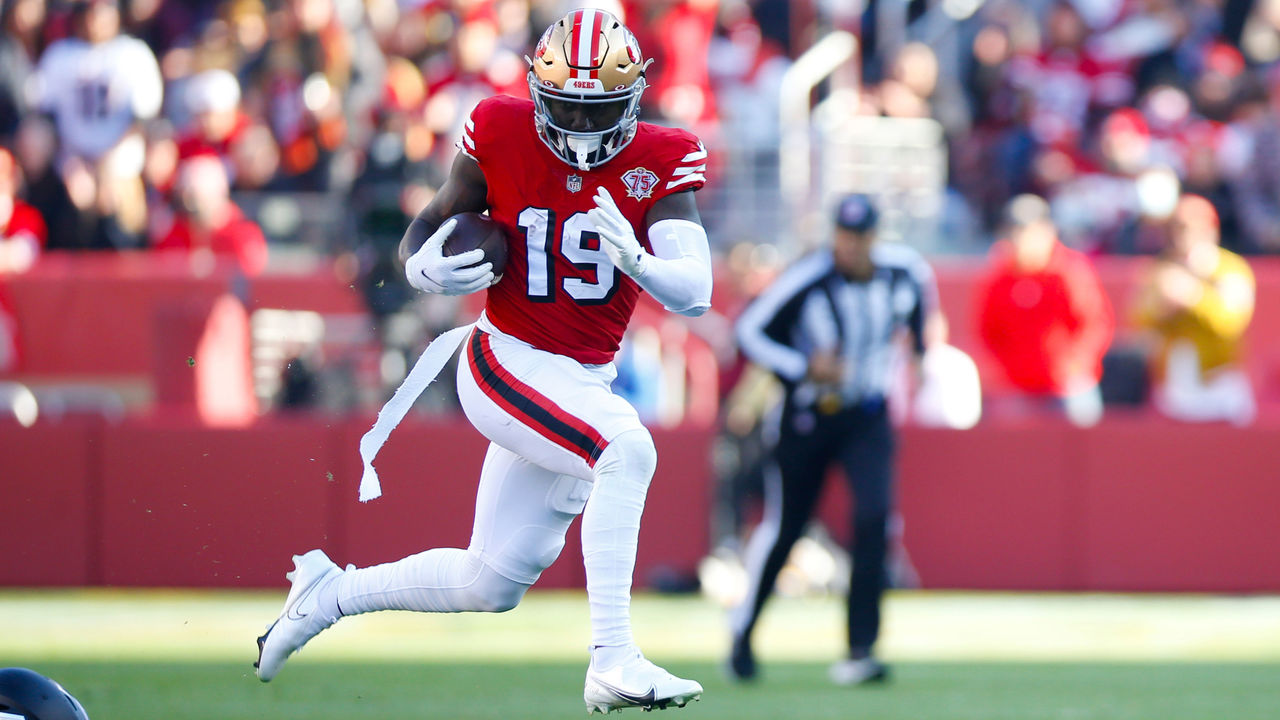What the 2022 NFL Draft says about the importance of wide receivers
The NFL just can't get enough of wide receivers these days, and it's dang good to be a veteran right now.
Ten receivers currently have contracts worth at least $20 million or more in average annual value, and eight of those deals were signed this offseason. The Raiders and Dolphins made blockbuster trades for Davante Adams and Tyreek Hill before signing them to deals worth $28 million and $30 million per season, respectively.
Then came last week's draft, in which six of the first 18 picks were wideouts - a record for the common draft era that began in 1967. In addition, 17 receivers were selected in the first three rounds, which is tied for the most in that same span. It was the third consecutive year that at least 15 receivers came off the board by the end of the third round.
Also on draft weekend, the Philadelphia Eagles traded for A.J. Brown and promptly gave him a deal with a $25 million AAV, while the Baltimore Ravens shipped Marquise Brown to the Arizona Cardinals, where he'll enjoy all sorts of leverage in his attempt to secure a huge second contract.
All of this spring's wheeling, dealing, and spending on wideouts was triggered by the $37 million in full guarantees and $18 million in AAV the Jacksonville Jaguars gave Christian Kirk when free agency began in March. Kirk has had fewer than 50 receptions twice in his four pro seasons and has never had 1,000 receiving yards in a given year. His contract represented a massive reset of the wide receiver market.
This flurry of activity suggests something else, too: a dichotomy between teams opting to pay a premium in draft capital and salary-cap resources for proven veterans versus franchises that choose to invest in the cost certainty provided by the draft's increasingly fertile talent pool for receivers. And this parallel team-building trend could play out for a while.
 Drake London was the first wide receiver selected in the 2022 NFL draft. Icon Sportswire / Icon Sportswire / Getty
Drake London was the first wide receiver selected in the 2022 NFL draft. Icon Sportswire / Icon Sportswire / GettyThe most obvious factor influencing the outsized demand for wideouts is the emphasis on the passing game in today's NFL, which is certainly not a new phenomenon. Throwing the ball is more efficient, and the league's rules gradually adjusted over the years to protect quarterbacks and pass-catchers, which stresses defenses - particularly in space.
Teams also deploy additional wideouts more frequently than in years past. According to Football Outsiders, offenses routinely work out of three-receiver sets roughly 60% of the time - a trend that has more or less held steady since 2016, even though three-receiver looks were only used on 40.4% of offensive snaps as recently as 2011.
The college and high school levels have long favored spread formations and a wide-open, pass-happy style. Some of this has trickled up to the NFL out of necessity since that's the sort of game pro-ready players are being coached to play.
Jim Nagy, a former longtime NFL scout, is the executive director of the Senior Bowl, an annual college all-star game. The event includes a week of open practices that are a crucial part of the draft scouting process. He's seen first-hand how the league's view of the receiver position has changed.
"I get fan bases riled up every year when we don't invite a guy who's got 1,500 yards receiving, but I feel like every school in the country's got three guys with 60 catches and 800 or 900 yards," Nagy told theScore.
"It's really a dime-a-dozen position. Everyone's throwing the ball around, so everyone's got stats. But there are definitely more guys coming up."
 Christian Watson was selected 34th overall by Green Bay. Icon Sportswire / Getty Images
Christian Watson was selected 34th overall by Green Bay. Icon Sportswire / Getty ImagesNagy pointed to the growth of seven-on-seven passing leagues and what he described as their "AAU effect" on developing more and better receivers at the youth level. The proliferation of these leagues and camps has created opportunities for prospective pass-catchers to get a lot more reps than ever before.
"This is just my own observation - there's no research behind this at all - but I think that as kids specialize in sports, you're seeing parents take a lot more control," Nagy said. "There's just way more out there at your fingertips now if you're a parent. It started out with quarterbacks, but there's O-line specialists now, there's D-line specialists. I think parents are very mindful of trends."
One trend Nagy believes parents are aware of is the devaluation of the running back position in the modern NFL. Running backs depend on having good blockers in front of them, and many teams in recent years have found value by selecting running backs after the first round of the draft.
Teams have also discovered that by the time those backs complete their fixed, low-cost rookie contracts, it's often more advantageous to replace them with a younger, cheaper player with less wear and tear than to pony up for a pricey veteran contract. The $31.2 million that was fully guaranteed in Saquon Barkley's rookie deal with the Giants, which was based on his slot as the No. 2 pick in 2018, remains the highest full guarantee being paid to any running back in the league currently under contract.
"That's a huge part of it," Nagy said. "You get beat up physically more than any other position and then you get rewarded the least."
Here's something else: Jason Fitzgerald of Over the Cap recently compared drafting different positions relative to their value on the free-agent market. His data showed that wideouts were second only to quarterbacks in terms of their salary-cap benefit as draft picks, as illustrated in this chart:
How to value positions in the NFL Draft to better optimize roster construction https://t.co/6k2eUrGFeo pic.twitter.com/jvv3d1d0IG
- Jason_OTC (@Jason_OTC) April 26, 2022
This may explain why teams were eager to over-draft at receiver this year - especially after Kirk's contract with the Jaguars put so much upward pressure on the veteran market.
On April 21, NFL Network analyst Daniel Jeremiah anticipated a big run on receivers early in the draft for just this reason.
"So you get cost control on a player like that at that price for four years plus a fifth-year option (for first-round picks) versus having to go the veteran route and having to pay that huge, huge number to get a premium guy," Jeremiah told reporters.
"If not pay him, then you've got to trade a bunch of assets to go get him. To me, I think that's why this year we see wideouts get pushed up a little bit more maybe than in years past. I think we'll see six of them go in the first round."
In his interview this week with theScore, Nagy echoed that sentiment.
You talk to guys around the league, and we certainly felt this way - a lot of those receivers got pushed up," Nagy said. In my mind, not all of them were necessarily first-round picks. Teams were looking to get ahead of that and bringing in some cheaper labor at the position."
 Michael Zagaris / Getty Images
Michael Zagaris / Getty ImagesWhether this plentiful supply of draftable receivers leads to a market correction down the road is anyone's guess, particularly with Marquise Brown, Deebo Samuel, DK Metcalf, and Terry McLaurin now eligible for pricey second contracts with the potential to hit free agency after 2022. Tee Higgins and Michael Pittman Jr. will be in a similar position next year.
First-round picks from the 2020 class such as CeeDee Lamb and Justin Jefferson have team options for 2024 attached to their rookie deals. Will their teams want to get ahead of the market by extending them once they're eligible after 2022? Beginning in 2023, the salary cap is expected to skyrocket annually for the foreseeable future, so the chance to spend big on the wideout position will still be there for teams that wish to go that route.
Nagy, for one, anticipates that teams will invest even more resources into drafting wideouts.
"Wide receiver is a position typically where you can get a lot of mid-round guys that hit, so I think you just might see more of them getting picked," he said. "If you have a need, rather than maybe address it with one pick, maybe you're taking two or three swings in that draft, just to hope to find that cheap one."
Dom Cosentino is a senior features writer at theScore.
Copyright (C) 2022 Score Media Ventures Inc. All rights reserved. Certain content reproduced under license.